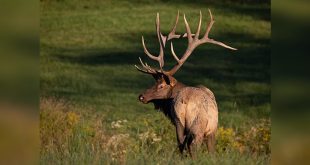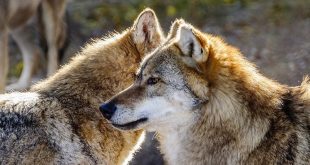Why Winterkill is the Hunter’s Recession: there’s always a bull (or buck) market somewhere
By Jaden Bales
Hunter Matt Standing Over Roadkill Buck Near Casper.
Anyone familiar with bull & bear financial markets can appreciate the up-and-down nature of investing in assets and gritting your teeth as you watch prices for them. I wasn’t very old when the Great Recession hit, but my grandpa took great care to make sure that I knew what was going on so that I was invested in the market when things came up again.
That year I sold my steer at the local fair and put that money into a variety of stocks with my grandpa and my joint account. Just 4 years later, I had quadrupled my money. Granted this wasn’t a lot, even for a young kid getting into investing, not even enough to pay for a year of college.
However, this works great as a metaphor for the winterkill that we are seeing today in western Wyoming, southeast Idaho, northwest Colorado and northern Utah.
We have come to rely on these mule deer populations as always being consistent producers of big bucks, and they have offered a good return on investment at the “Bank of Mother Nature” to hunt there. Unfortunately, they have taken a nosedive this year. For everyone looking to cash out on their preference points to hunting these areas it feels like a punch in the gut.

If you have been waiting on your investment for nearly a decade, and all of a sudden the return is pulled out from underneath you, you have a reasonable and understandable depression about the situation.
Yet for people with a 20 or 30 year view, this could be categorized as a setback before the growth of great hunting as these populations climb in the aftermath. Not to mention this creates important opportunities in other markets to learn and develop as a hunter. If all you know is how to hunt in one part of the world, 2023 is as good of a year as any to invest in yourself and invest in a new spot where the great winter recession of 2023 has not hit so hard.
To speak more plainly, where this winter has taken a toll on ungulate populations in some areas, there are other areas that received excellent moisture that was more than needed following a four year drought.

There is a recent study that just released stating fawn production and recruitment tracks very closely with precipitation. In some places, you can predict the number of fawns you will recruit based on the amount of moisture the area received in inches of water.
Locally, if you’re a resident in one of the states that has been hit hard it’s a great time to explore new grounds and find areas that are doing well.
If you look at fawn survival, recruitment, buck ratios, and the overall healthiness of herds in southern Utah, Nevada, Arizona, and New Mexico, things are looking up. Since Utah has quality data, we know the Beaver, the Book Cliffs, the Monroe, and others have surpassed 95% survival in their adult deer. In the Pine Valley unit of Utah, biologists recorded a record-high number of fawns on the ground going into the winter along with great over-winter survival, too.
With statistics like that, you’re probably chomping at the bit to put a tag in your pocket in one of these arid environments like me.

Speaking through my Wyoming lens, the Red Desert portion of the Sublette herd, the Upper Shoshone River herd and the Northern Bighorn herds in Wyoming have largely escaped this winter without catastrophic damage to their populations. The collared deer researchers have in these areas are seeing near normal, if not slightly above average adult mortalities this year.
It’s also important for folks to remember the adult loss on the landscape is focused on old deer and fawns, which means that the bulk of the deer you will find on the landscape will be the strongest prime age population that will see next year’s hunting season.

The last three Wyoming bucks I’ve taken were lab aged and survived the 2016-17 winter. Granted it was not nearly as bad as this one, it leaves space for optimism to find bucks to chase – just make sure expectations match where you are hunting. If the biologists expect 50% adult loss in the Wyoming Range, expect your basin of 10 bucks to hold 5, and so on. Not to mention, with green up going gangbusters, it’s no far stretch to think it will be a great year for antler growth.
Am I suggesting we should not be upset about the tragedies we see following this winter’s severe and historic losses?
No.
It’s devastating and horribly sad to see on the ground.
If you or someone who is looking to cash in on the experience of a lifetime, or the buck of a lifetime in the next couple of years in these hardest hit parts of the West, you have all the right to lament this situation.
But for those of you out there, who have a long-term view, we have seen these cycles play out overtime. Wildlife populations are resilient. This is a phenomenon we’ve seen play out eons over eons. The historically horrendous 1949 winter was only a decade before the mule deer boom of the 1960s. The record-breaking 1983 winter preceded an incredible peak of deer populations in the early 1990s.
While the habitat will be in good shape and likely will see a rebound to deer numbers naturally, supporting good work on the ground to reduce highway collisions and make sure houses do not go up in migration corridors can’t hurt. It’s part of investing in the wildlife and habitat so it will be cranking out annual returns for hunters in the upcoming years. If you want to buy low, sell high, you certainly should not be taking your money out of the western hunting game now.
[modula id=”94518″]
 Eastmans' Official Blog | Mule Deer, Antelope, Elk Hunting and Bowhunting Magazine | Eastmans' Hunting Journals
Eastmans' Official Blog | Mule Deer, Antelope, Elk Hunting and Bowhunting Magazine | Eastmans' Hunting Journals




